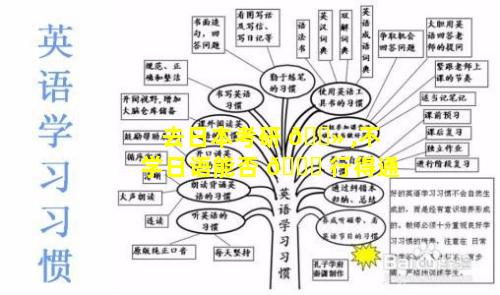初级日语副词众多,究竟如何学好呢
- 作者: 刘婉愿
- 来源: 投稿
- 2024-10-01
1、初级日语副词众多,究竟如何学好呢
初级日语副词学习技巧
1. 分类和分组:
根据副词的意义和功能进行分类,如时态副词、方式副词、疑问副词等。
将同义或近义的副词分组,便于记忆。
2. 系统学习:不要孤立地记忆副词,而是将其融入到语法规则和会话情景中进行学习。
熟悉副词在句子中的位置和用法。
3. 活用教材和词典:
充分利用初级日语教材,学习副词的用法和例句。
查阅可靠的日语词典,了解副词的详细含义和用法。
4. 练习和复习:
通过练习题巩固对副词的理解和运用。
定期复习已学过的副词,以加强记忆。
5. 常用副词优先:
初学者应优先学习最常用和实用的副词,如「よく」、「いつも」、「ない」等。
这些副词有助于快速提升会话能力。
6. 创造会话:尝试将副词融入到对话或短文中,模拟实际应用场景。
通过实际运用加深对副词的理解。
7. 日本文化背景:
了解一些日本文化背景有助于理解某些副词的含义和用法,如「やれやれ」、「どうも」等。
8. 循序渐进:逐步学习,不要急于求成。
只有打好基础,才能逐步掌握更高级的副词。
记住:学习副词是一个循序渐进的过程,需要耐心和坚持。通过灵活运用上述技巧,初学者可以逐步提升自己的日语副词水平,为流畅的沟通奠定基础。
2、初级日语副词众多,究竟如何学好呢英文
Mastering the Abundance of Adverbs in Elementary Japanese Language
Navigating the plethora of adverbs in elementary Japanese language can be an arduous task for novice learners. However, with a systematic approach and effective learning strategies, proficient usage of these modifiers can be achieved.
1. Classification and Patterns: Recognizing Types of Adverbs
Time adverbs indicate when an action occurs (e.g., 昨日 kinou, 明日 ashita).
Place adverbs express location or direction (e.g., ここ koko, あそこ asoko).
Manner adverbs describe how an action is performed (e.g., ゆっくり yukkuri, 丁寧に teinei ni).
Degree adverbs modify the intensity of an action (e.g., とても totemo, 非常に hijou ni).
2. Common Usage Situations: Understanding Contextual Application
Adverbs typically come before the verb they modify.
The particle は (wa) can be used to emphasize adverbs in a sentence.
Some adverbs can be used in conjunction with other grammatical structures for added emphasis or specific meaning.
3. Practice and Immersion: Enhancing Fluency and Accuracy
Utilize textbooks, online resources, and language exchange platforms that provide opportunities to practice using adverbs in various contexts.
Pay attention to examples in reallife conversations or native Japanese media to observe how adverbs are naturally used.
Engage in writing exercises to reinforce the correct usage and placement of adverbs in sentences.
4. Flashcards and Spaced Repetition: Effective Memorization Techniques
Create flashcards with both the adverb and its English translation to aid in memorization.
Use spaced repetition techniques to review and reinforce the adverbs at increasing intervals, strengthening their retention.
5. Seek Support and Guidance: Benefitting from External Resources
Consult with a language tutor or instructor for personalized guidance and feedback on adverb usage.
Join online forums or study groups where you can interact with other learners and exchange knowledge.
6. Patience and Consistency: Essential Attributes for Mastery
Mastering adverbs in Japanese requires consistent effort and dedication over time.
Avoid becoming discouraged by initial setbacks and focus on gradual progress.
Celebrate your achievements and use them as motivation to continue improving.
By embracing these strategies, learners can effectively navigate the diverse landscape of adverbs in elementary Japanese language. With patience, practice, and a commitment to ongoing improvement, fluency and accuracy in adverb usage will become an attainable goal.

3、初级日语副词众多,究竟如何学好呢
如何学好日语副词1. 理解副词的种类和功能:
副词可以归类为:时间副词
场所副词
方式副词
程度副词
频率副词
疑问副词
2. 循序渐进:
不要试图一下记住大量副词。从最常见的副词开始,如:
時間副詞:今(いま)、昨日(きのう)、明日(あした)
場所副詞:这里(ここ)、那里(あそこ)、上(うえ)
方式副詞:ゆっくり、速く、丁寧に
3. 通过语境学习:
在真实语境中学习副词可以帮助你理解其用法和含义。阅读文本、观看视频、听音乐时,注意其中的副词并记录下来。
4. 运用单词卡:
制作单词卡来记录副词、它们的汉字、读音和示例句子。定期复习单词卡可以加强你的记忆。
5. 使用在线资源:
利用在线词典和语法网站来查找副词的定义、同义词和反义词。还可以使用应用程序来练习副词。
6. 与他人练习:
与志同道合的学习者或老师一起练习使用副词。通过对话或书面交流,你可以获得反馈并提高你的熟练度。
7. 持续练习:学习副词需要时间和努力。定期复习、使用和应用副词,直到你能够流利地使用它们。
其他提示:专注于你正在学习的语法点。
分散学习,避免一次性记忆大量信息。
不要害怕犯错,错误是学习过程的一部分。
持之以恒,不要轻易放弃。
4、新版标准日本语初级副词
副词强调副词
まったく:完全地
ぜんぜん:一点儿也不
程度副词とても:非常
たいへん:非常
すこぶる:非常
けっこう:相当
かなり:相当
いささか:稍微
ちょっと:稍微
指示副词
ここ:这里
そこ:那里
あそこ:那边
こっち:这边
そっち:那边
あっち:那边
时间副词
いま:现在
ちょうど:正好
しばらく:一会儿
ずっと:一直すでに:已经
まだ:还没有
其他副词
と:并且、而且
ばかり:一直、只
ほど:程度だけ:只、仅仅
ながら:虽然
って:表示举例或强调




